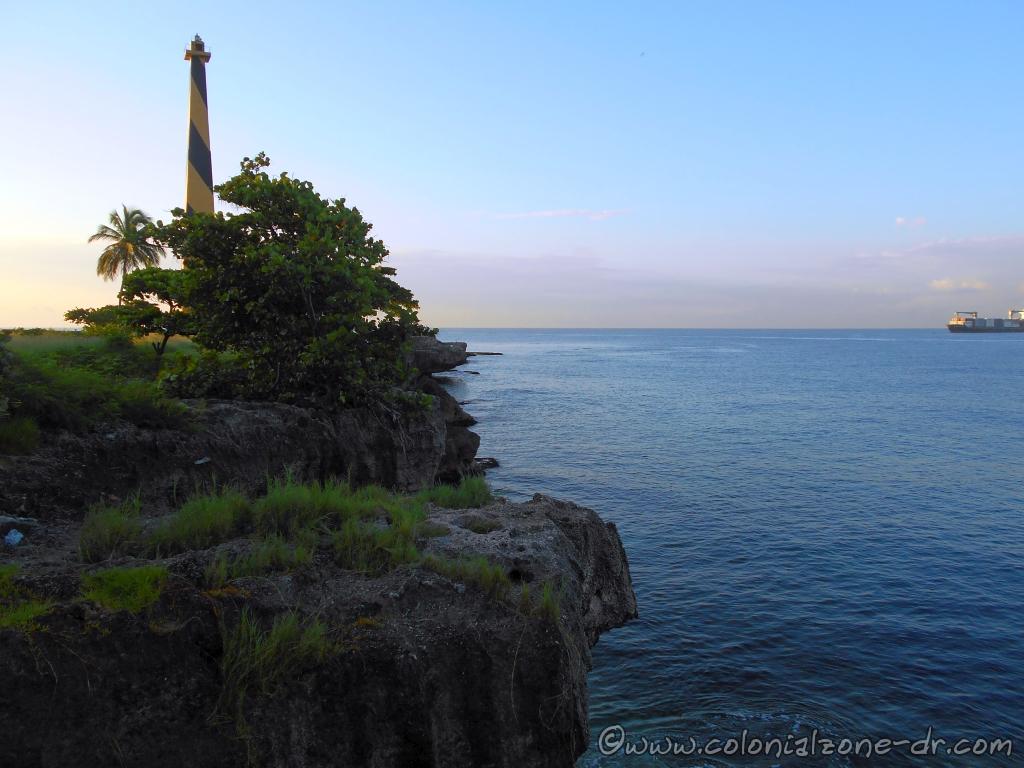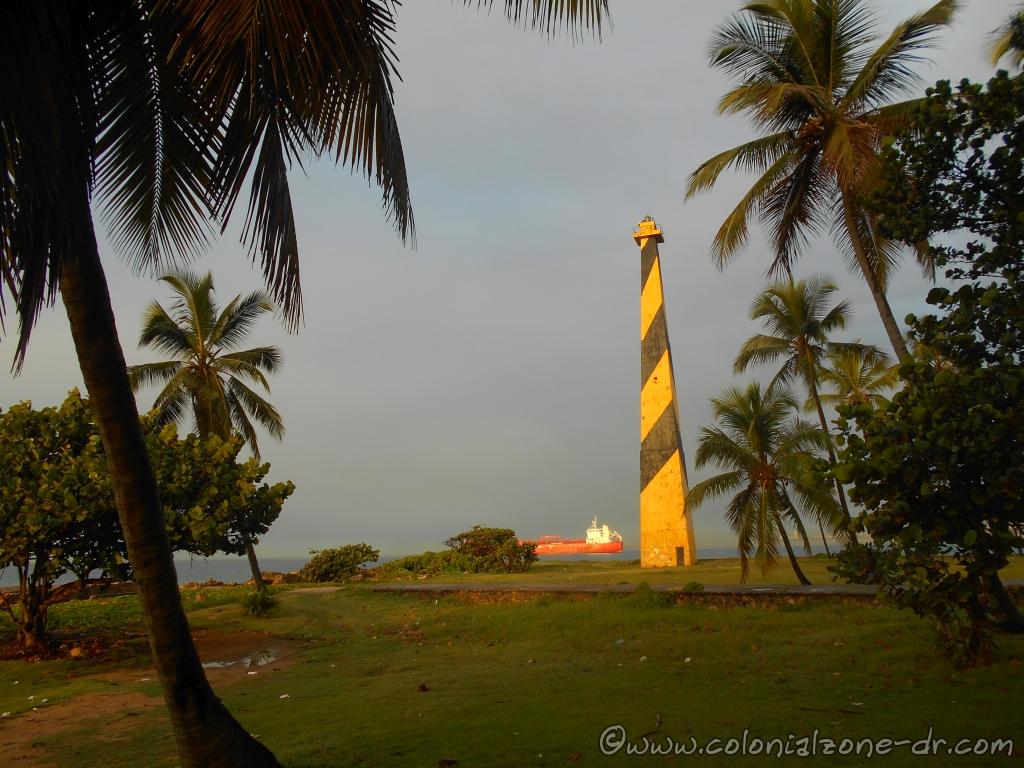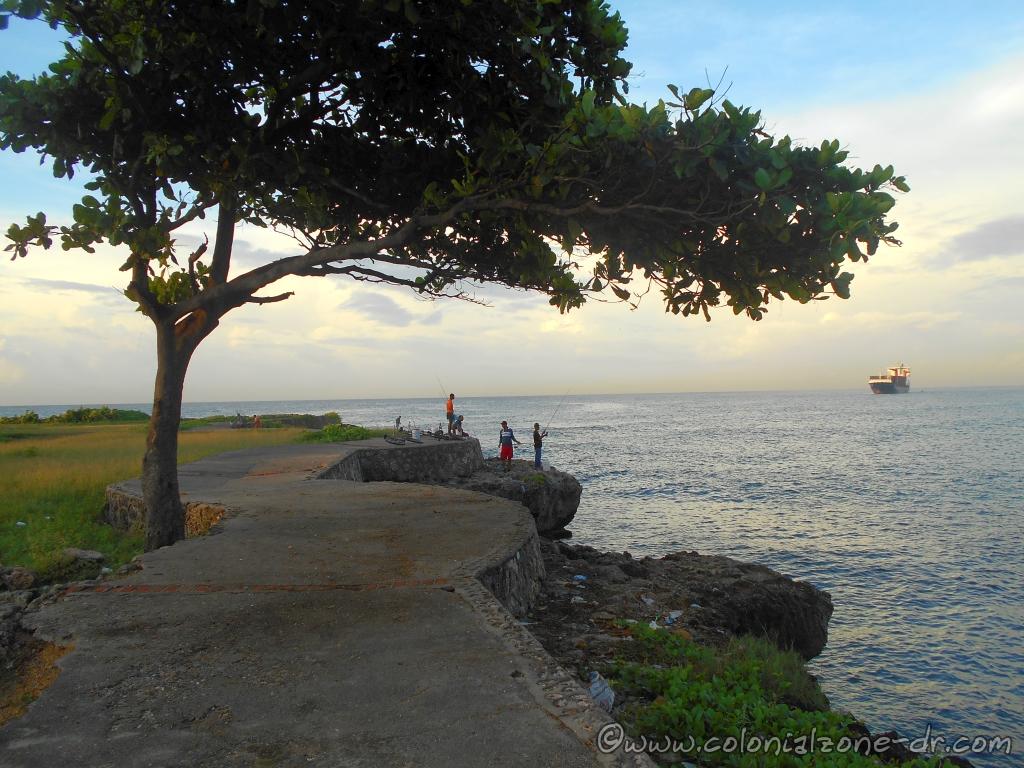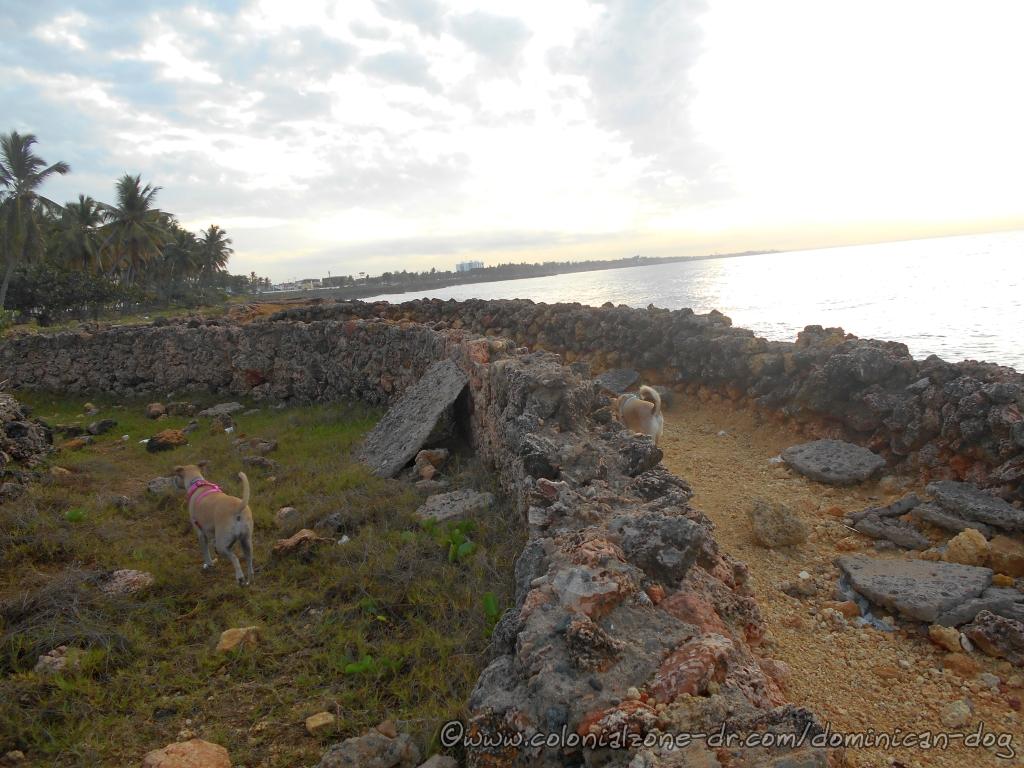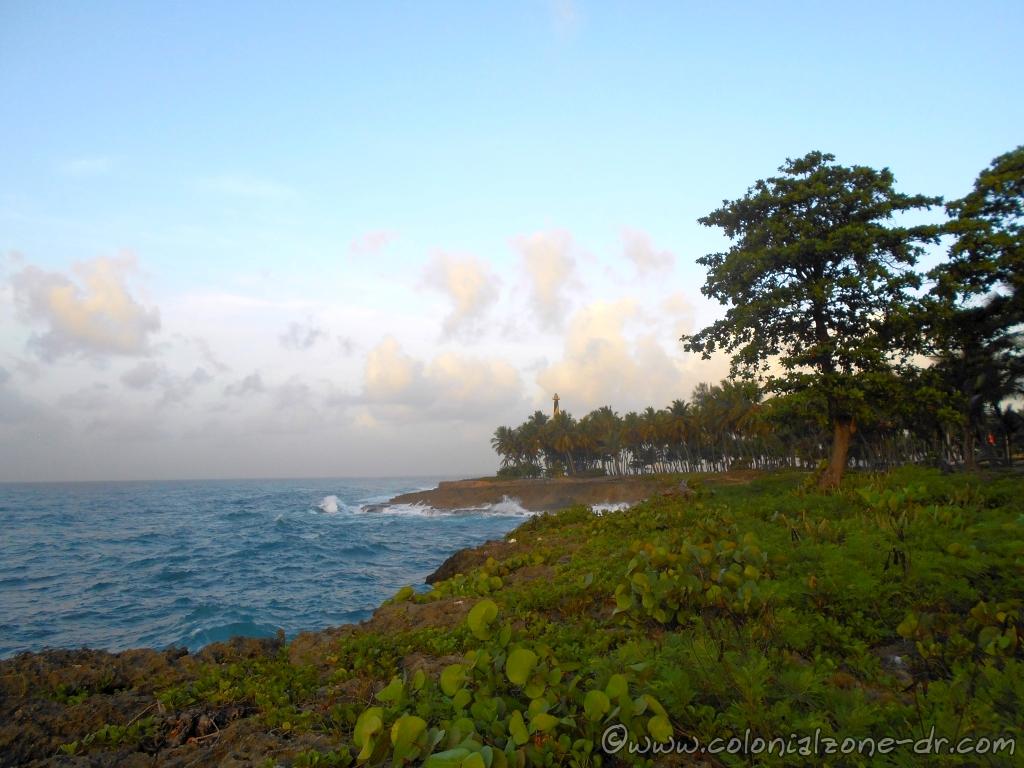Plaza Monumento a la Caña / Sugar Cane Monument Park
The beautiful tree-filled Plaza Monumento a la Caña / Sugar Cane Monument Park is located in Villa Duarte just across the River Ozama from the Colonial Zone. Inside the park are 2 monuments, the Monumento a la Caña/ Sugar Cane Monument and the Monumento Marina de Guerra / Marine Monument.

The Plaza | Monumento a la Caña | Monumento Marina de Guerra | Location |

The Plaza
The Parque Monumento a la Caña is a favorite among the locals. You can watch some young people dancing or doing some acrobatic moves. There might be a game of Bittila (similar to baseball but played with a plastic water bottle top). There are usually some local dogs lounging around. And of course, the people enjoying the shade, having a picnic, taking a little snooze or visiting with friends and neighbors. The park is well-maintained by the Santo Domingo Este City Council (SDE).
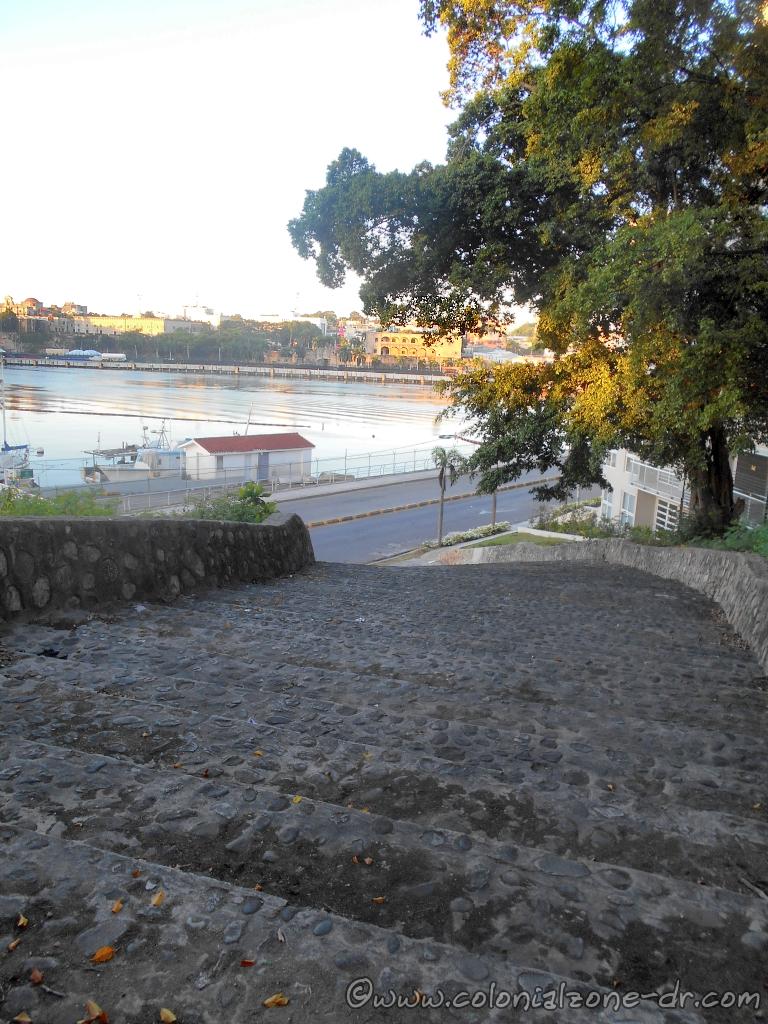
The grande stone staircase is the perfect way to enter the park from the road that runs along Rio Ozama. It is on Av. Malecon across from the Marina Bartolomé Colón where many sail and fishing boats are parked. From the top of these long winding stairs, you can have a beautiful view of the river and the Colonial Zone.
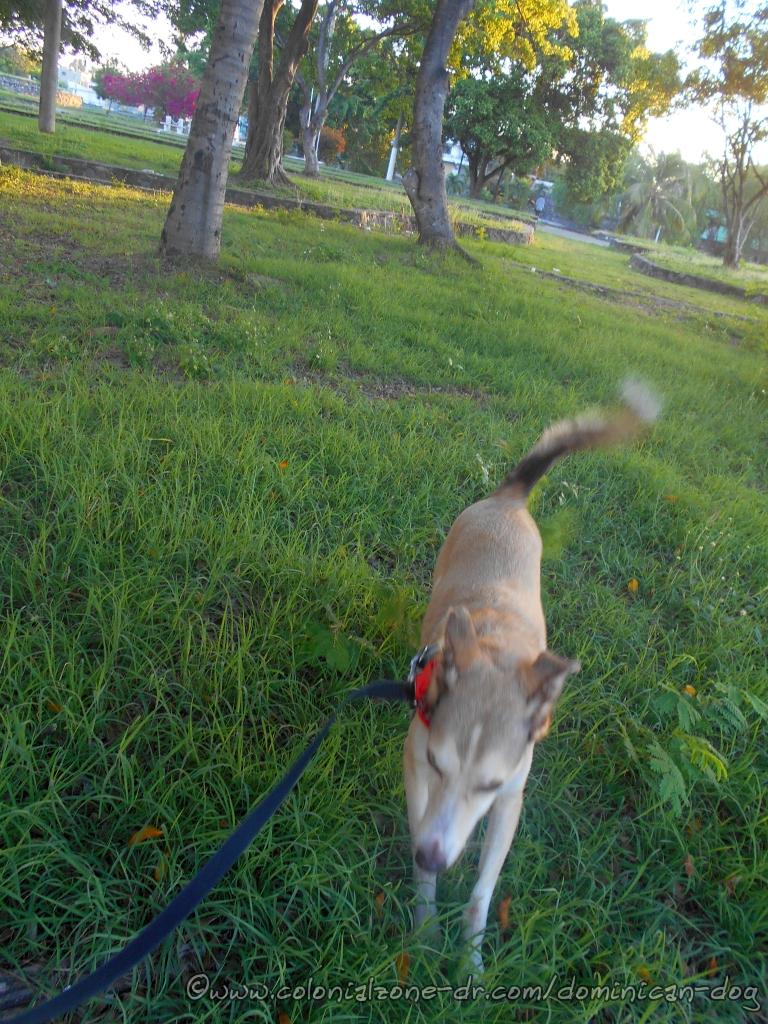
On the other side of the Plaza, separated by a road, is the rest of the Plaza. The road divides this lonely part from the main park. It is a part of the park I call it the Annex. It has 3 levels, one is blocked by a fallen tree, that you can walk. It is not well maintained and is sometimes used as a sleeping spot for street people.

NOTE: Do not take valuables to this area if you want to walk around. It is not as secured by the police as the Colonial City. It is surrounded by some very poor neighborhoods that are interesting to visit. Also, NEVER GO HERE AFTER DARK. Just to be on the safe side.
Monumento a la Caña / Sugar Cane Monument
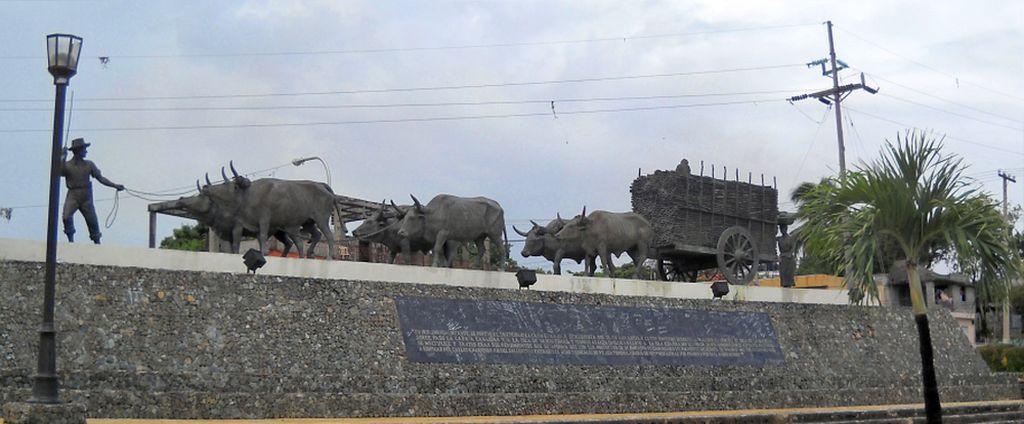
The Sugar Cane Monument consists of a magnificent bronze sculpture that was inaugurated in 1992 by President Dr. Joaquín Balaguer.
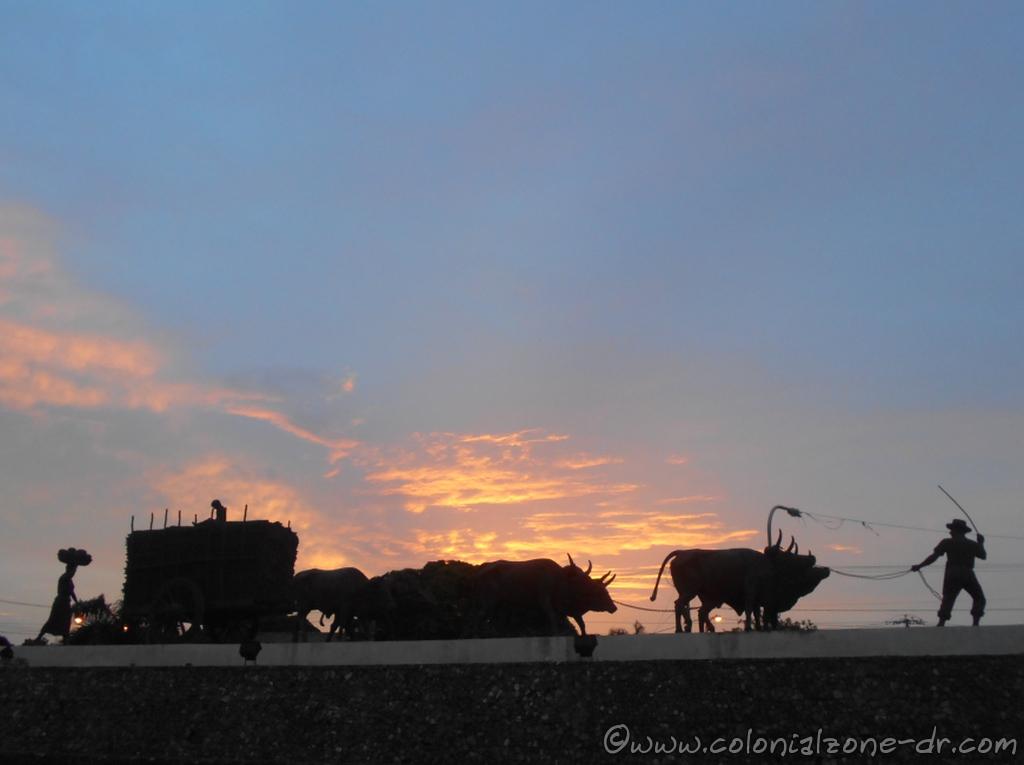
The bronze monument shows six oxen pulling a cart full of sugar cane with a child on top and his mother behind carrying a basket full of Cocoa. The father is the one who guides the animals using a whip. The sculpture depicts the hard work carried out by the colonists, the entire family helping, transporting the raw cane from the field to the mills.
Monumento Marina de Guerra / Marine Monument
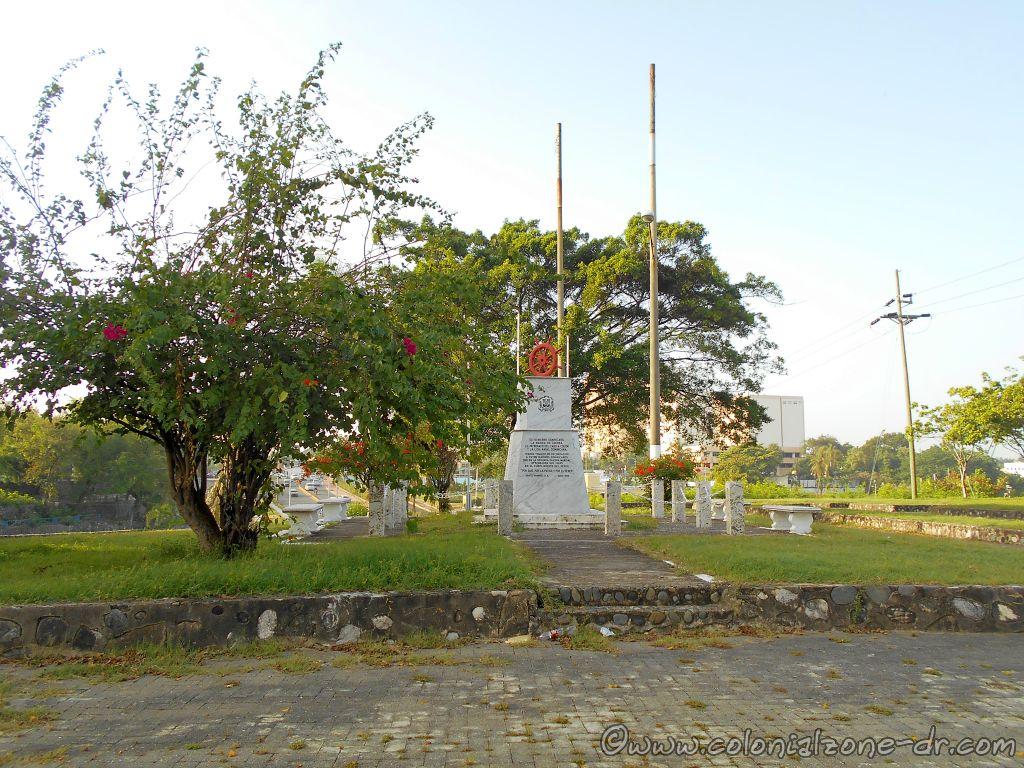
Monumento Marina de Guerra is also located in the center of the Parque Monumento a la Caña. This monument of a ship’s wheel is dedicated to the remembrance of the Dominican sailors who fell during World War 2.
The marble lined monument lists the names of the Dominicans who fell in the war. There is a list of the the Sunken Ships / Naves Hundidas both Steam / Vapor and Schooner / Goleta
The Monumento Marina de Guerra reads:
“El Gobierno Dominicano, La Marina de Guerra, El Patronato Del Faro a Colon, y la Liga Naval Dominicana, rinden tributo de recordación a estos marinos dominicanos que en la segunda guerra mundial ofrendaron sus vidas en el cumplimento del deber. “Por Dios. Por La Patria y Por El Deber” Santo Domingo D.N. Mayo 1999”
(English Translation) “The Dominican Government, the Navy, the Board of Faro a Colon, and the Dominican Naval League, pay tribute of remembrance to these Dominican sailors who in the Second World War offered their lives in the line of duty. “For God. For the Homeland and For Duty ”Santo Domingo D.N. May 1999 ”
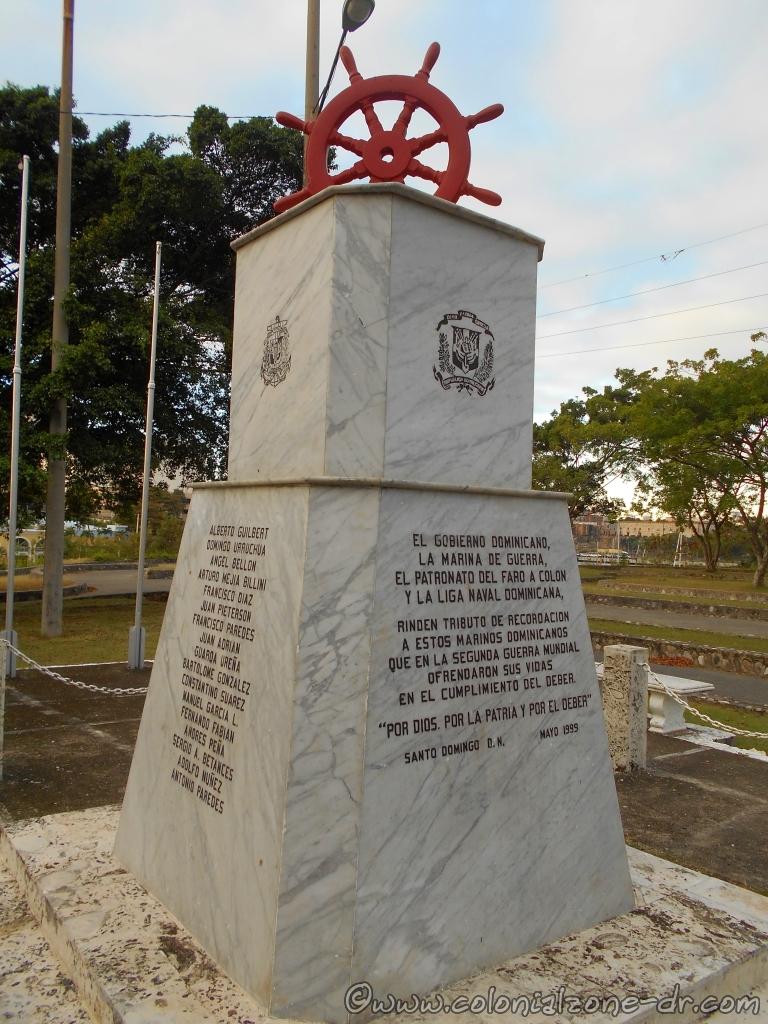
NOTE: Do not take valuables to this area if you want to walk around. It is not as secured by police as the Colonial City. It is surrounded by some very poor neighborhoods that are very interesting to visit. Also, NEVER GO HERE AFTER DARK. Just to be on the safe side.
Location
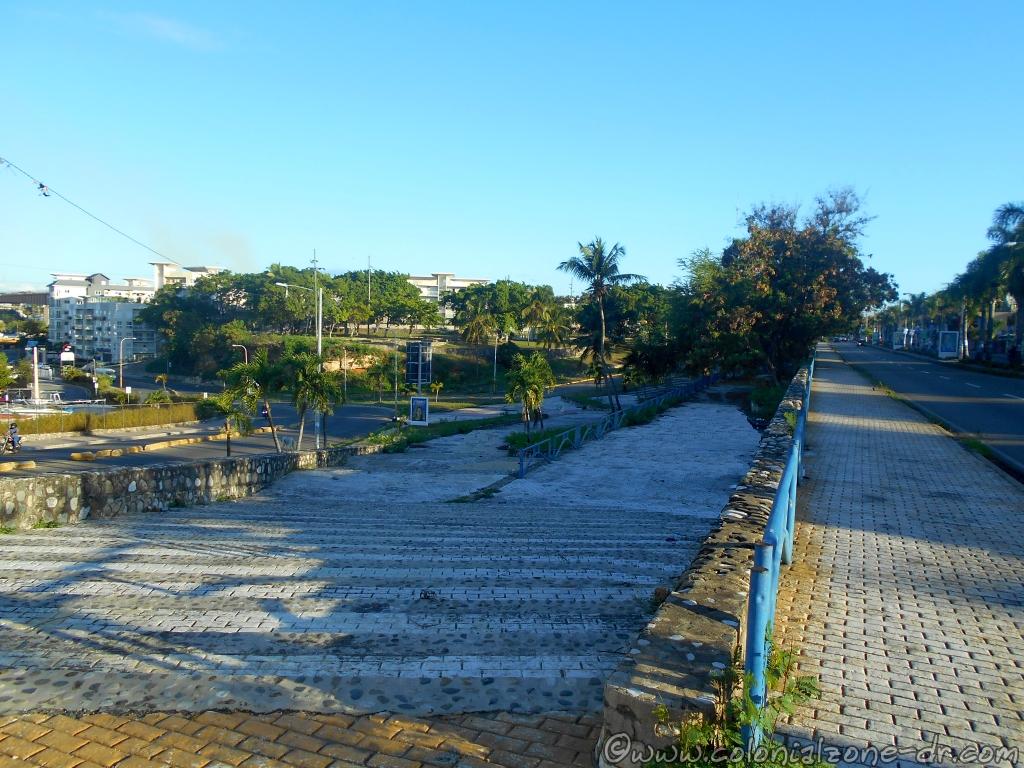
The park is surrounded by Av. Malecon, Calle Maria Trinidad Sanchez and Av. España in Calero, Villa Duarte, Santo Domingo East. It is less than a 10-minute walk from the Puente Flotante/Floating Bridge that connects Santo Domingo to Santo Domingo Este.
Walking from the Colonial Zone cross the Puente Flotante (Floating Bridge). Turn right walking along Rio Ozama. On the left after the large apartment buildings is a staircase that is across from the Marina Bartolomé Colón. You can walk up the stairs and enter the park. If you do not want to go up the steep stairs continue walking to the next road on the left.

NOTE: I strongly suggest that if you do not want to climb the stairs that you wait to cross the road. The stone wall after the stairs on that section of the road is not secure. Rocks or the entire wall will fall from time to time.

